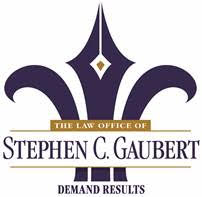
- Rear-end accidents are the most common type of automobile collision that happens when one vehicle stops suddenly in front of another or when one vehicle follows another too closely.
- Low-speed collisions are better known as the classic “fender bender” and can happen in residential neighborhoods, parking lots or garages, school zones or other areas with heavy pedestrian traffic.
- Merging accidents occur when drivers fail to check their blind spots before merging into another lane.
- Cross-traffic or T-Bone accidents typically occur at intersections when a driver fails to stop at a red light or stop sign.
- Single-vehicle accidents are common among younger, fairly inexperienced drivers.
- Hydroplaning accidents occur when water accumulates on the road causing the tires to slide on the surface of the water and taking away control of the vehicle from the driver.
There are several different kinds of car accidents, all with varying severity and implications. Car accidents are exactly as the name implies – accidents, but by learning about the common types of car accidents and their causes, you can learn how to avoid most vehicle collisions as best as humanly possible.
Rear-End Accidents
According to the National Highway Transportation Safety Administration, 29 percent of all motor vehicle accidents are rear-end collisions. This most common type of automobile collision happens when one vehicle stops suddenly in front of another or when one vehicle follows another too closely. Another common cause of rear-end accidents is failing to look at the road or engaging in another activity while driving.
The damage caused by rear-end accidents is often minimal. Still, these accidents can generally be avoided by providing a safe distance between vehicles, even in slow-moving traffic. Always have your eyes on the road in front of you while driving. Other activities, whether answering a phone call, texting, eating, applying makeup or any other activity besides driving should be saved for when the vehicle is parked.
Low-Speed Collisions
Low-speed collisions are better known as the classic “fender bender” and can happen in residential neighborhoods, parking lots or garages, school zones or other areas with heavy pedestrian traffic. With vehicles moving at low speeds, the damage to a car may be minimal.
The greatest danger in a low-speed collision is to pedestrians that may be involved. Pedestrians can be quite seriously injured even in low-speed collisions, so it’s important to be vigilant and cautious when backing up, turning blind corners and anytime you’re operating an automobile in areas with people on foot.
To help avoid “dings” and other small damages to your vehicle, park sensibly. Remember that a parking space that is difficult to enter will also be difficult to exit. Leave plenty of distance between your vehicle and the next vehicle when parking, so that all doors can be opened and shut easily.
Merging Accidents
Every vehicle has blind spots, which can make merging lanes difficult. It’s important to not only be cautious when merging into traffic but to also be aware of other vehicles that are merging. If you check your blind spots before merging and follow posted speed limits in areas where other cars commonly merge, you can help reduce the incidence of merging accidents.
Cross-Traffic (T-Bone) Accidents
These accidents occur at intersections, typically because a driver fails to stop at a red light or stop sign. Cross-traffic accidents can also potentially occur during a left turn if a driver becomes confused over which vehicle has the right of way. T-bone and other cross-traffic accidents may be due to the negligence of one of the drivers involved.
T-bone accidents can cause serious damage, injury or even death. The Insurance Institute for Highway Safety named cross-traffic, or side impact, accidents as the cause of 27 percent of motor vehicle passenger deaths in 2009.
It’s difficult to predict when another driver will cause a cross-traffic accident, so be especially cautious at intersections. Pay attention to other drivers’ speed, or other signs they may not be attentive, when approaching intersections to help prevent this common type of accident. A vehicle with side curtain airbags can help prevent injuries from side collision accidents.
When making turns at traffic lights, be sure to allow enough time to complete the turn before the light turns red. Risking a turn on a yellow light might save a minute or two, but it’s better to be safe than to be involved in one of these dangerous, potentially deadly, accidents.
Single-Vehicle Accidents
This common type of car accident is especially common with younger, fairly inexperienced drivers. These might involve losing control of the vehicle, running off the road or hitting a stationary object such as a tree, wall or mailbox. These accidents are sometimes caused by overcorrecting a mistake, such as veering toward the center line. Swerving to avoid an animal or object in the road can also lead to single-vehicle accidents.
Avoiding single-vehicle accidents can be a difficult task, but one way to help prevent them is to maintain a safe speed. Also, be aware of weather conditions that make driving more difficult. Using high beams in rural areas may help to avoid animal collisions, which can be a cause of significant vehicle damage and injury.
Hydroplaning
Cars can be subject to hydroplaning when rain water accumulates on the road, in which the tires slide on the surface of the water instead of making contact with the road. Hydroplaning takes away control of the vehicle from the driver, making this a particularly dangerous accident. Drive slower in wet driving conditions than in dry conditions and make sure your tires have adequate tread to minimize your chances of hydroplaning.
Roadways can be a dangerous place, but being aware and vigilant when operating a motor vehicle helps make roads safer for everyone. Not every accident can be prevented, but many types of car accidents can simply be avoided with the right precautions and situational awareness. For the accidents that can’t be prevented, contact The Law Office of Stephen C. Gaubert for the expert legal advice you’ll need to navigate the claims process from an attorney that truly cares.










